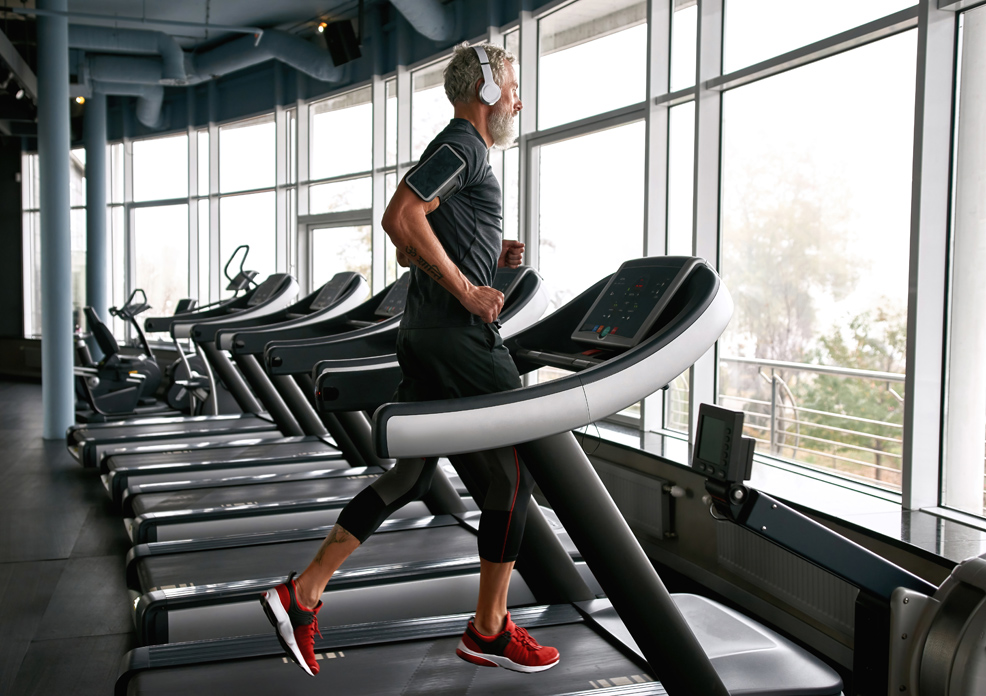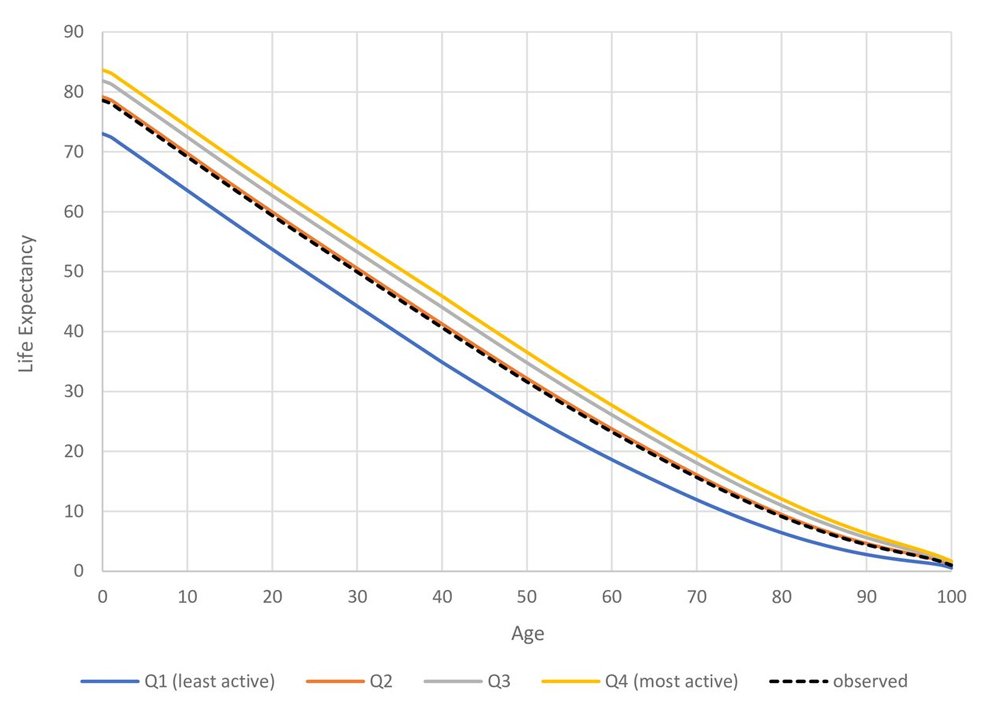A new study finds that over-40s in the U.S. could live an extra five years if they adopted the exercise routines of the top 25% of the population, while the least physically active could potentially add 11 years to their lifespan.

For many in the futurology community, the extension of human lifespan is among the most highly anticipated goals in science. While revolutionary milestones such as longevity escape velocity (LEV) may still be a considerable way off, even simple lifestyle changes today can yield remarkable benefits for longevity.
A new study published in the British Journal of Sports Medicine highlights one such intervention: physical activity. It is already well known that low levels of physical activity are associated with a higher risk of diseases, such as heart conditions and stroke, as well as premature death. Until now, however, it has been unclear to what extent low physical activity levels shorten lifespan in specific groups of people or countries, such as the United States.
To find out, researchers created a predictive model to estimate the impact of different levels of increased physical activity on life expectancy. They based their model on physical activity risk estimates and tracker data from the National Health and Nutritional Examination Survey, alongside population data from the U.S. Census Bureau and deaths recorded from the National Centre for Health Statistics.
The most active 25% of Americans over the age of 40 were found to have total physical activities equivalent to 160 minutes of normal-paced walking at 4.8 km/h (3 mph) every day. Based on this, the researchers estimated that if all over-40s in the country matched that level of physical activity every day, their average lifespan would increase by more than five years – boosting life expectancy at birth from 78.6 to almost 84 years.
For the least physically active 25% of the population to match the most physically active 25%, they would need to clock up an extra 111 minutes of walking at 4.8 km/h (3 mph) every day (or equivalent effort). However, this could increase their life expectancy by a massive 11 years, the estimates suggest.

The greatest gain in life for every hour walked was seen among the least physically active, among whom each extra hour of walking could add 376 minutes to their life expectancy: equivalent to more than six hours. Gains to life expectancy decreased as physical activity rose and, when averaged out, every extra hour walked could add 169 minutes (two hours and 49 minutes) to life expectancy.
"Our findings suggest that physical activity provides substantially larger health benefits than previously thought, which is due to the use of more precise means of measuring it," the team writes. "The greatest gain in lifetime per hour of walking was seen for individuals in the lowest activity quartile, where an hour's walk could add an impressive six hours to life."
They suggest that increased investment in physical activity promotion and the creation of living environments that foster physical activity have the potential to yield large gains in life expectancy for Americans at the population and individual level.
"Infrastructure measures that encourage active transport, walkable neighbourhoods, as well as green spaces might be promising approaches to increase physical activity and resultant healthy life expectancy at the population level," they suggest.
By FutureTimeLine









